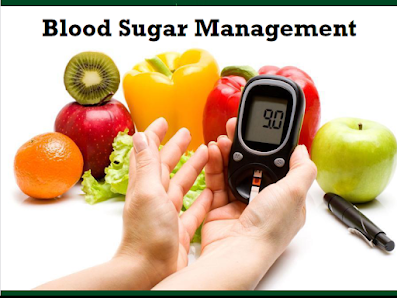A day after The Star’s page one story on the increasing number of online financial crimes, Bank Negara announces it is joining forces with the police to stem the rising tide. The central bank is instituting tighter security controls while the cops are intensifying efforts to make the public more aware of cybercrimes.
https://www.thestar.com.my/news/nation/2022/09/27/putting-the-brakes-on-cybercrime?dmplayersource=share-link
KUALA LUMPUR: Cybercriminals are very good at quickly adopting and exploiting new technological changes to stay ahead of law enforcement while they scam millions from the public.
This is why the number of online financial crimes is rising around the world and in Malaysia, according to Inspector-general of Police Tan Sri Acryl Sani Abdullah Sani.
Such crimes can have terrible consequences, he pointed out in his speech before he and Bank Negara governor Tan Sri Nor Shamsiah Mohd Yunus launched a virtual Financial Crime exhibition yesterday.
“Financial crimes can devastate the victim and lead to more mule accounts being created for the purpose of scams. It can also have a negative impact on the nation’s economy in the long term,” said Acryl Sani.
Loan scammers and Ah Long (loan sharks) use social media sites and chat applications to advertise their loan offers with fast approvals.
“The syndicates will deal with the victims online and demand various documents and fees before duping them,” he explained.
Bukit Aman expects the syndicates will still employ similar tactics, but they will focus on a younger victim pool – students and youths – to pull off illegal money lending and mule account scams now.
“We are cooperating with banking institutions to ensure investigations, especially those involving mule accounts, can be completed faster,” Acryl Sani said.
Fraud in online purchases, loan and investment scams, the Macau and African scams, business email hacks and SMS scams are the main types of financial crimes and such cases have been on the rise from 2019 to 2021 (the last full year on which statistics were collected), the IGP said.
In 2019, there were 13,703 cases recorded with Rm539mil in losses; followed by 17,227 cases in 2020 and Rm511.2mil in losses; and 20,701 cases last year with Rm560.8mil lost. As at July this year, 12,092 cases had been recorded, resulting in Rm414.8mil in losses, he said.
Bukit Aman has rounded up 33,147 suspects between 2019 and July this year, while 22,196 cases have been prosecuted.
While there is some awareness among members of the public of such crimes nowadays, it is still not strong enough to prevent increasing numbers.
The Royal Malaysia Police has various programmes and campaigns to raise awareness about cybercrimes among the public, such as the “Let’s Fight Scammers Together” campaign.
“We will step up such activities this year,” Acryl Sani added.
The IGP advised the public to safeguard their personal information and avoid downloading files or applications from unverified sources onto mobile devices.
Account holders who encounter suspicious transactions involving their bank accounts should immediately notify their banks, contact the CCID infoline via Whatsapp at 013211 1222, or the CCID Scam Response Centre at 03-2610 1559/1599 or BNMTELELINK at 1-300-88-5465.
“They should also lodge a police report to facilitate the investigation,” said Acryl Sani.
The virtual Financial Crime exhibition by Bank Negara Malaysia Museum and Art Gallery, which can be accessed at bit.ly/bnm_ crime, lays out various types of financial crimes and how they have evolved over time.
It features interactive exhibits that allow the public to simulate financial scam scenarios. Through the various exhibits, the public will be able to learn strategies – such as Spot, Stop and Share, aka 3S – to protect themselves and others from becoming victims.
Banks to further tighten security control to stay one step ahead of scammers
KUALA LUMPUR: If you notice your online banking transactions taking a little longer in the future, don’t complain. It’s a sign that your bank is trying to protect you from cybercriminals.
Concerned by the rising number of scams and online financial crimes globally and in Malaysia, Bank Negara is directing the banking industry to undertake tighter security controls, its governor Tan Sri Nor Shamsiah Mohd Yunus said.
ALSO READ:
Public must be more aware of how scams work
The level of concern is great enough to bring about a rare high-level meeting between Nor Shamsiah and Inspector-General of Police Tan Sri Acryl Sani Abdullah Sani yesterday, when they also launched a virtual Financial Crime Exhibition.
“Bank Negara requires banks in Malaysia to adopt high standards of security, especially for Internet and mobile banking services,” Nor Shamsiah said in her speech at the event.
ALSO READ:
Watch out! There are many ways in which we get duped
This will include measures such as migration of SMS one-time-passwords (OTPs) to a more secure form of authentication; further tightening of detection rules and triggers for blocking scam-related transactions; and subjecting first-time enrolment of online banking services and secure devices to a cooling-off period.
Customers will also be restricted to one mobile device or secure device for authenticating online banking transactions, and banks will also be required to set up dedicated scam hotlines.
ALSO READ:
Consumers must become more aware of scams
While the control measures may entail some inconvenience, they are important to protect customers.
“These controls may lead to some friction or inconvenience in the online banking experience of customers.
“For example, online banking transactions might take a little longer to process. Financial institutions will also conduct more checks when customers request to change or register a new phone number,” Nor Shamsiah said.

Fighting crime: Bank Negara Governor Tan Sri Nor Shamsiah Mohd Yunus and Inspector General of Police Tan Sri Acryl Sani Abdullah Sani at the virtual launch of Bank Negara Malaysia Museum and Art Gallery’s ‘Financial Crime: Scan Before You’re Scammed’. — Bank Negara
However, she said, when implementing these measures, Bank Negara and the financial industry will continue to carefully balance between security considerations and customer convenience.
She also said that financial institutions have been directed to be more responsive to scam reports lodged by customers and to facilitate efforts to recover and protect stolen funds, including working with relevant agencies to prevent further losses.

“Bank Negara will also continue to monitor and take appropriate action with financial institutions to ensure that the highest levels of controls and security standards are observed.
CLICK TO ENLARGECLICK TO ENLARGE
https://cdn.thestar.com.my/Content/Images/cybercrime.jpg
“We will also continue to take effective preventive measures against ever-evolving financial scams.”
Together with the financial industry, Bank Negara will continue to ensure that banking and payment channels remain secure and equipped with the latest security controls, she said.
Acknowledging that criminal tactics change all the time, she said that Bank Negara continuously intensifies deterrent efforts and introduces additional controls as well as safeguards and collaborates with other stakeholders to keep ahead of scammers.
These include rolling out preventive measures, pursuing more effective and coordinated enforcement actions, and raising public awareness.
“The effort to eradicate financial scams requires cooperation and concerted action from all parties – not just from Bank Negara and the financial industry, but also from law enforcement agencies and relevant ministries and agencies, as well as the public,” she added.
Bank Negara, together with the police, Malaysian Communications and Multimedia Commission and National Anti-Financial Crime Centre, will work together to further elevate the Commercial Crime Investigation Department’s Scam Response Centre into a more systematic information-sharing platform that will enable quicker action to prevent further losses.
Nor Shamsiah said the cooperation of law enforcement agencies is key, especially in sharing information and intelligence.
The public also has a role to play in protecting themselves by making sure to be aware of scams.
“An important aspect of dealing with financial scams is raising public awareness about tactics used by criminals and the steps that the public can take to avoid becoming victims.
“In this regard, Bank Negara, the financial industry and law enforcement agencies will continue efforts to enhance the effectiveness of awareness programmes and improve on the dissemination of information to the public,” she said.
The virtual Financial Crime Exhibition launched yesterday is an example of such efforts as it seeks to educate the public about financial scams. It can be viewed at bit.ly/bnm_crime.
By FARIK ZOLKEPLI and RAGANANTHINI VETHASALAM
Source link
PUTTING THE BRAKES ON CYBERCRIME - PDRM
United States: Putting Brakes On Cybersecurity Threats






















